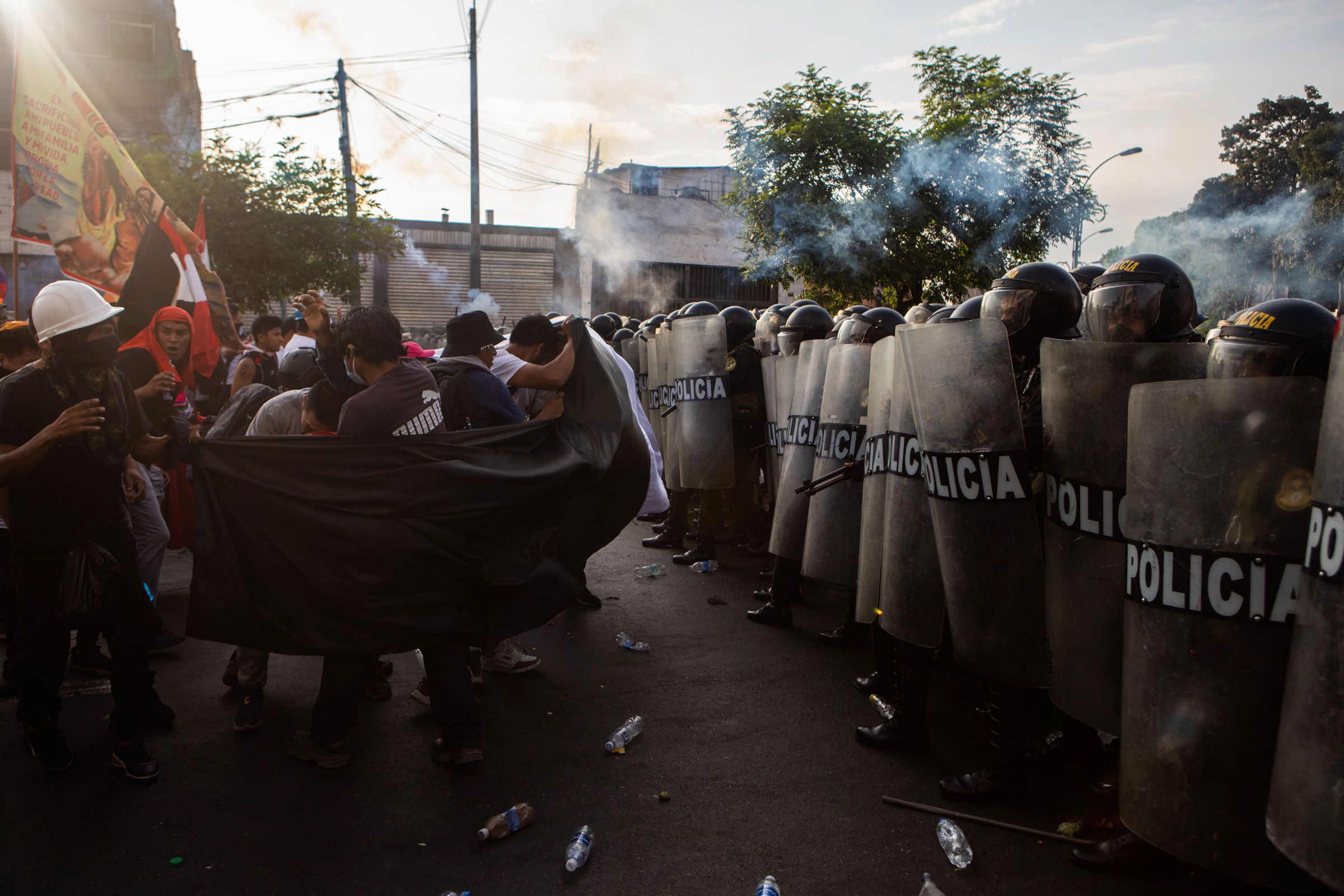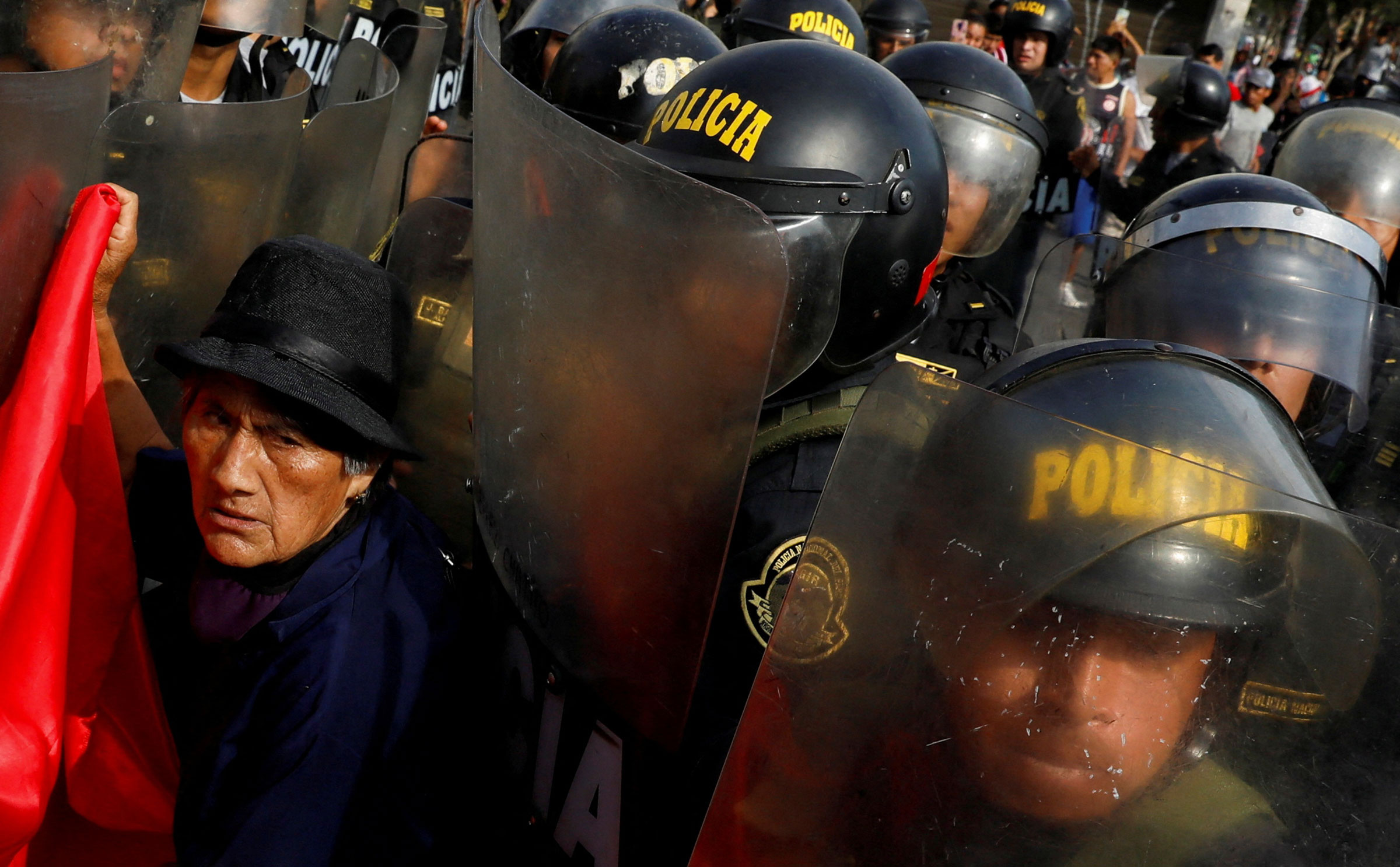An attempted self-coup by former Peruvian President Pedro Castillo on December 7 led to widespread protests in the country that have left almost 60 dead and hundreds injured.
After over seven weeks of protests, demonstrators have been calling for the resignation of Castillo’s successor, President Dina Boluarte—who imposed curfews in some cities and temporarily suspended some civil liberties such as freedom of movement. Last month, lawmakers voted to move elections from 2026 to to 2024, but with protests showing no sign of stopping, Boluarte urged lawmakers to move the elections up further to December of 2023.
There isn’t one clear reason for the demonstrations. While Castillo’s arrest might have provided an immediate opportunity for some of his supporters who believe he got a raw deal, experts say the demonstrations are the result of years of political and economic instability.
Who is Pedro Castillo?
Castillo came to power with the support of Peru’s disenfranchised, many of whom saw themselves in the former elementary school teacher from the impoverished Cajamarca region, known as a “son of the soil” for his lack of political ties. “He wasn’t connected to Lima at all–economically, socially, or politically,” which made him popular amongst the country’s poor, says Moisés Arce, a professor of Latin American Studies at Tulane University.

In 2021, Castillo scraped a win in a tight election against hard-right opponent Keiko Fujimori, but his lack of political expertise contributed to a turbulent government and a failure to deliver on many of the promises that got him elected. “He would promise reform but never had the votes to make it happen,” says Arce.
He appointed five Prime Ministers and over 80 ministers in just over a year and a half, many of whom lacked political experience. “He was unable to put together a government in that short period,” says Arce. “It was simply a government failure.”
Congress tried twice to impeach him, but both times, the measure failed to get enough votes. A third impeachment vote had been called for December 7th–the day Castillo announced that he would be dissolving Congress and installing an emergency government.
But Castillo’s reign as a dictator was a blink-and-you’ll-miss-it moment, over just as soon as it began. It took all of a few hours for his political allies to drop him and Congress to finally deliver the impeachment vote it had been threatening for months. As Castillo headed to the Mexican embassy in search of asylum, his security detail turned him in to the police. He remains in prison while prosecutors continue their investigation into criminal charges against him.
For many, Castillo’s actions were reminiscent of those of dictator Alberto Fujimori who staged a self-coup in 1992 and later rewrote the constitution. The memory, still fresh in the minds of Peruvians, allowed people to jump in quickly to ensure Castillo did not follow in his footsteps.
“Anyone who has followed Peru through the 90s remembers Fujimori,” says Cynthia McClintock, a professor of political science and international affairs at George Washington University.
Why are Peruvians protesting?
The protests that launched in December are only one part of an ongoing political crisis. After a commodities boom led to a period of growth in the early 2000s, Peru began to face an economic downturn in 2016.
Since then, no president has finished their term–in 2020, the country went through three presidents in one week. Boluarte is the country’s sixth president in seven years, and it is unlikely she will make it to the end of her term.

As the government changed hands constantly, it became difficult for the country to build on programs it began during its growth period. “There was total gridlock in Congress between the far-right and the President,” says McClintock.
Peru has had the highest COVID-19 fatality rate in the world, according to the Johns Hopkins Coronavirus Research Center. When the COVID-19 pandemic hit, basic services were put under strain, with the country unable to provide things like medical oxygen for patients with the virus. “The pandemic revealed the fragility of basic institutions,” says Arce.
The pandemic also impacted the 2021 elections. Pollsters were unable to poll and campaigns were on hold, says McClintock. “No one could vote strategically,” she says. “It was catastrophic.”
This, McClintock said, is why many protesters are pushing for another round of elections. “A lot of people are saying, we can do better in a new election because 2021 was such a catastrophic election.”
What happens next?
The Peruvian Congress has already approved a measure to move elections up to 2024—two years before they were scheduled, but Peruvians are pushing for an election to be held even sooner than that. McClintock says that setting a date for elections in the next few weeks could help quell protests eager for a change in leadership.
Some of the protesters are calling on the government to replace the constitution put in place by Fujimori, a decision experts are wary of.
“We’re going to replace a constitution that came out of a dictatorship with another constitution that has basically come out from a lot of violence,” says Arce.

More Must-Reads from TIME
- Donald Trump Is TIME's 2024 Person of the Year
- Why We Chose Trump as Person of the Year
- Is Intermittent Fasting Good or Bad for You?
- The 100 Must-Read Books of 2024
- The 20 Best Christmas TV Episodes
- Column: If Optimism Feels Ridiculous Now, Try Hope
- The Future of Climate Action Is Trade Policy
- Merle Bombardieri Is Helping People Make the Baby Decision
Write to Simmone Shah at simmone.shah@time.com